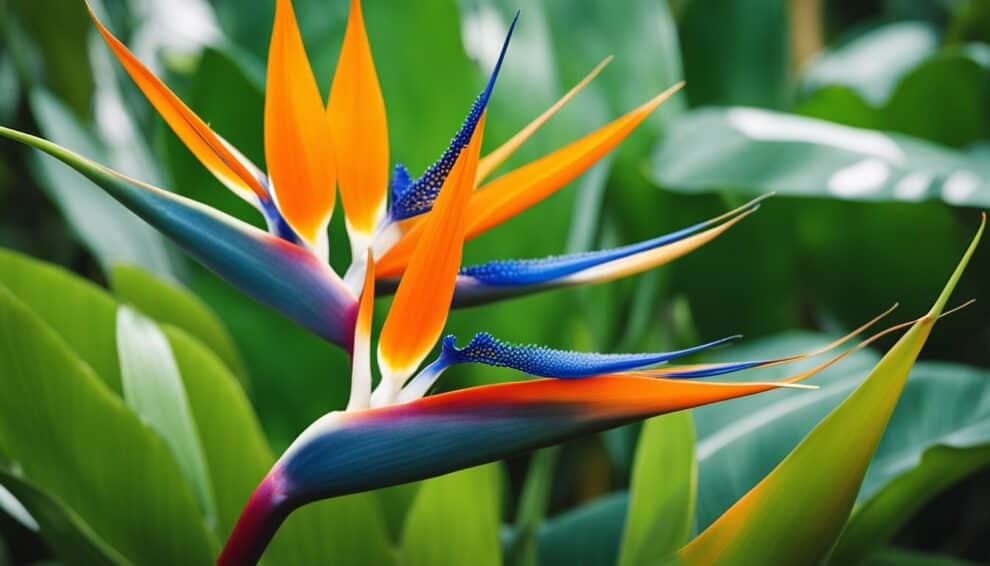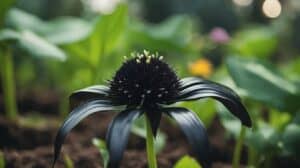Bird of Paradise, also known as Strelitzia Reginae, is a tropical plant that is native to South Africa.
It is a popular houseplant due to its stunning flowers that resemble the shape of a bird in flight.
Bird of Paradise is a relatively easy plant to care for, but propagating it can be a bit tricky.
In this article, we will provide tips and tricks for propagating Bird of Paradise, so you can enjoy the splendor of Strelitzia Reginae in your home or garden.

Propagation is the process of creating new plants from existing ones.
There are several methods of propagating Bird of Paradise, including division, seed propagation, and root cuttings.
Each method has its own advantages and disadvantages, and the success rate may vary depending on the conditions and techniques used.
This article will cover the most effective ways to propagate Bird of Paradise, so you can choose the method that works best for you.
Whether you are a seasoned gardener or a beginner, these tips will help you spread the splendor of Strelitzia Reginae and add a touch of tropical beauty to your surroundings.
Understanding Bird of Paradise Propagation
Propagation Basics
Bird of Paradise, also known as Strelitzia Reginae, is a popular tropical plant that is native to South Africa.
It is known for its stunning orange and blue flowers that resemble the head of a bird.
If you’re looking to propagate your Bird of Paradise, there are a few things you should keep in mind.
One of the easiest ways to propagate Bird of Paradise is through division.
This involves separating the plant into smaller sections and replanting them in new pots.
To do this, gently remove the plant from its pot and carefully separate the roots and stems into smaller sections.
Be sure to use a sharp, clean knife to avoid damaging the plant. Once you have divided the plant, replant each section in a new pot with fresh soil.
Another way to propagate Bird of Paradise is through seeds. However, this method can be more challenging and time-consuming.
To start, collect the seeds from a mature plant and soak them in water for a few hours.
Then, plant the seeds in a pot with well-draining soil and keep the soil moist. It may take several weeks for the seeds to germinate, so be patient.
Best Time for Propagation
The best time to propagate Bird of Paradise is in the spring or summer when the plant is actively growing.
This will give the new plants the best chance of establishing themselves and growing strong roots.
It’s also important to make sure the plants are kept in a warm, humid environment to encourage growth.
In conclusion, propagating Bird of Paradise can be a fun and rewarding experience.
Whether you choose to divide the plant or grow it from seeds, be sure to follow these tips to ensure success.
With a little patience and care, you’ll soon have a beautiful collection of these stunning tropical plants.
Preparation for Propagation

Selecting the Right Plant Material
Before propagating Bird of Paradise, it is important to select the right plant material.
Choose a healthy and mature plant that is at least three to four years old. The plant should have a good root system and be free from any diseases or pests.
Select a plant that has several stems, as this will provide more material for propagation.
Tools and Materials Needed
To propagate Bird of Paradise, the following tools and materials are needed:
- Pruning shears
- Sharp knife
- Rooting hormone
- Potting mix
- Pots or containers
- Clear plastic bags
Make sure that the pruning shears and knife are clean and sharp, as this will help to prevent any damage to the plant material.
Rooting hormone is essential for successful propagation, as it encourages root growth.
Potting mix should be well-draining and nutrient-rich, and the pots or containers should be large enough to accommodate the new plants.
Clear plastic bags are needed to create a humid environment for the new plants.
By following these tips, you can prepare for successful Bird of Paradise propagation.
Propagation Methods

Bird of Paradise plants can be propagated through two main methods: seed propagation and division propagation.
Seed Propagation
Seed propagation is the most common method of propagating Bird of Paradise plants.
This method involves collecting the seeds from a mature plant and planting them in a suitable potting mix.
The seeds should be planted at a depth of 1/4 inch and kept moist until they germinate.
It is important to note that Bird of Paradise seeds can take up to 6 months to germinate, so patience is key.
Once the seedlings have grown to a suitable size, they can be transplanted into individual pots.
It is important to make sure that the potting mix is well-draining and that the pots have adequate drainage holes.
The seedlings should be kept in a warm, humid environment until they are established.
Division Propagation
Division propagation is another method of propagating Bird of Paradise plants.
This method involves dividing a mature plant into smaller sections and replanting them in individual pots.
This method is best done in the spring when the plant is actively growing.
To divide a Bird of Paradise plant, carefully remove it from its pot and gently separate the roots into smaller sections.
Each section should have at least one healthy stem and a good root system.
The sections can then be replanted in individual pots with well-draining potting mix.
It is important to keep the newly divided plants in a warm, humid environment until they are established.
Regular watering and fertilization will also help the plants to grow strong and healthy.
Overall, both seed propagation and division propagation can be successful ways to propagate Bird of Paradise plants.
With patience and proper care, you can enjoy the splendor of these beautiful plants in your own home or garden.
Post-Propagation Care

After successfully propagating bird of paradise plants, it is important to provide them with the proper care to ensure their long-term health and growth.
This section will cover the initial care and environment needed for newly propagated plants, as well as long-term plant maintenance tips.
Initial Care and Environment
When the bird of paradise plant has been propagated, it is important to provide it with the right environment to thrive.
The following are some tips for providing the right care and environment for newly propagated bird of paradise plants:
- Soil: Use a well-draining soil mix that is rich in organic matter.
- Watering: Water the plant regularly, but make sure to avoid overwatering as this can cause root rot.
- Light: Place the plant in a location that receives bright, indirect sunlight. Avoid placing it in direct sunlight as this can scorch the leaves.
- Temperature: Keep the plant in a warm location with temperatures between 60-70°F (15-21°C).
- Humidity: Bird of paradise plants prefer high humidity, so mist the leaves regularly or place a humidifier nearby.
Long-Term Plant Maintenance
In addition to the initial care and environment, it is also important to provide long-term plant maintenance to ensure the health and growth of the bird of paradise plant.
The following are some tips for maintaining your bird of paradise plant over the long-term:
- Fertilizer: Feed the plant with a balanced, water-soluble fertilizer every 2-3 months during the growing season.
- Pruning: Regularly prune the plant to remove dead or damaged leaves and to promote new growth.
- Repotting: Repot the plant every 2-3 years to provide it with fresh soil and more space to grow.
- Pest control: Keep an eye out for common pests such as spider mites and mealybugs, and treat them promptly with insecticidal soap or neem oil.
By following these post-propagation care tips, you can help your bird of paradise plant thrive and flourish for years to come.
Frequently Asked Questions

Can you propagate a Bird of Paradise plant from a leaf cutting?
No, you cannot propagate a Bird of Paradise plant from a leaf cutting. The plant needs to be propagated through division or by growing from seed.
What are the steps to divide and replant a Bird of Paradise?
To divide and replant a Bird of Paradise, start by removing the plant from its pot and gently separating the roots.
Cut the rhizome into sections, making sure each section has at least one healthy shoot.
Replant each section in a new pot with fresh soil and water thoroughly.
How do you encourage the growth of Bird of Paradise pups?
To encourage the growth of Bird of Paradise pups, keep the plant in a warm and sunny location.
Water the plant regularly, but make sure the soil is well-draining.
Fertilize the plant every two weeks during the growing season with a balanced fertilizer.
Is it possible to root a Bird of Paradise in water?
No, it is not possible to root a Bird of Paradise in water. The plant needs to be propagated through division or by growing from seed.
What are the best conditions for propagating Strelitzia Nicolai?
The best conditions for propagating Strelitzia Nicolai are warm temperatures, bright but indirect sunlight, and well-draining soil.
Keep the soil moist but not waterlogged and fertilize the plant every two weeks during the growing season with a balanced fertilizer.
What should a healthy Bird of Paradise rhizome look like?
A healthy Bird of Paradise rhizome should be firm and plump with no signs of rot or damage. The rhizome should have several healthy shoots and roots.
If the rhizome looks dry or shriveled, it may be a sign of underwatering or poor soil quality.













